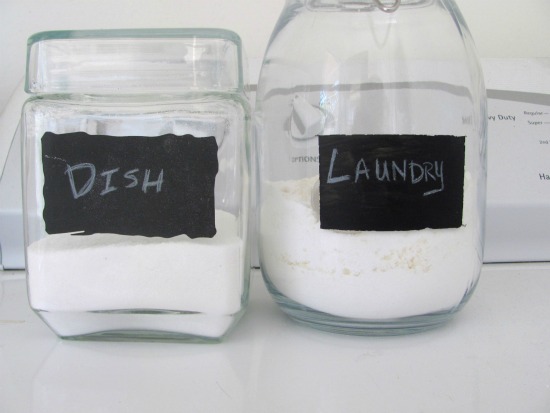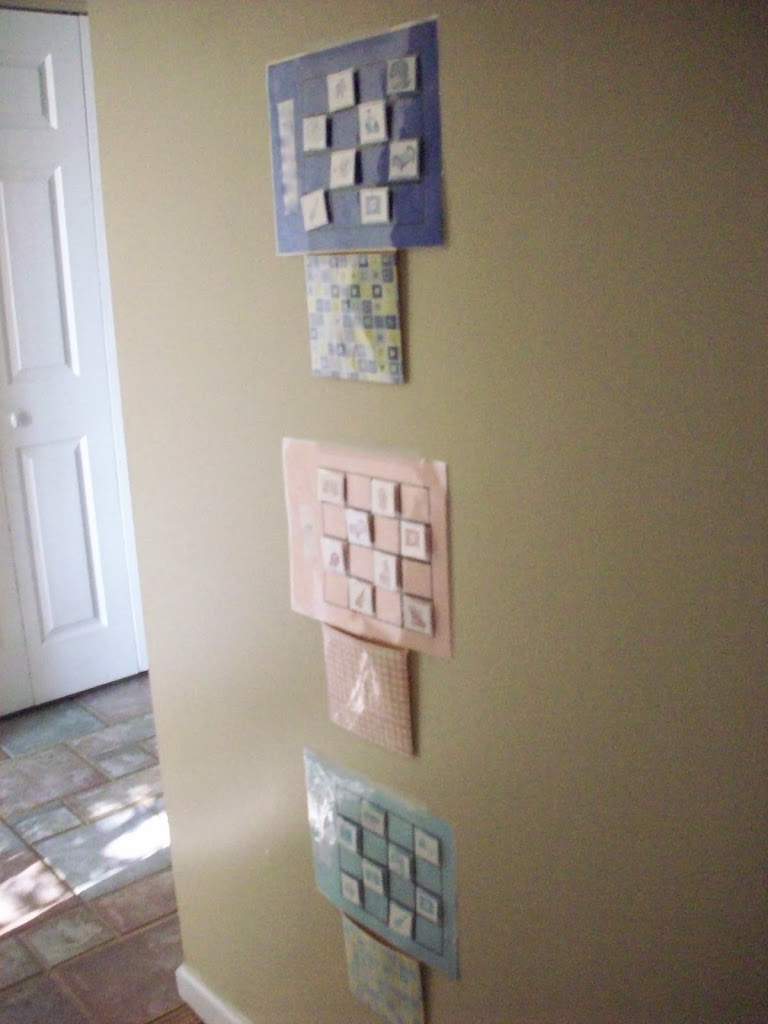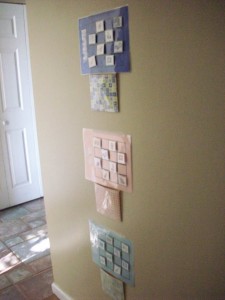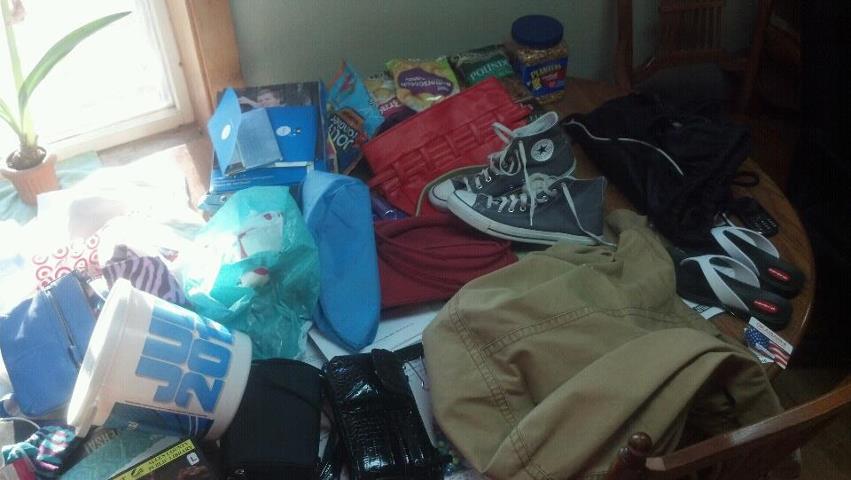by Donna | Sep 2, 2014

Earlier I described how we as homeschooling mothers need to be problem solvers.
One of the problems that we hear about over and over again when we are out speaking is that of students not completing everything that you want them to in any given day. AND keeping kids on task.
Our solution: Independent Work Lists!
Here are some tips for creating Independent Work Lists for elementary children:
1. Either make it on a chart that the child uses wipe and write markers and mount it somewhere–or make it in Excel (or your favorite record keeping program) and place it on a thin clip boards.
(more…)

by Donna | Jan 7, 2014
 |
| Image from scoutiegirl.com
|
Twenty-five years ago when I was a young mother, housewife, and homeschooler, I had trouble getting all of my work done every day–while teaching a young son to read, keeping a curious preschooler out of everything, taking care of a toddler, nursing a baby, etc. Truly the statement “the days are long but the years are short” was never more real to me.
I had problems that many people who are “self employed” have–plus the added “benefits” of having a lot of littles around making messes and needing seemingly-constant attention. (I really do think they are benefits–but when a man is self-employed, he usually doesn’t have to take care of a home, feed a crew, and provide constant care and supervision to little kids! He just, well, works!)
The greatest problem that those of us who are self employed and/or homeschoolers and/or housewives with littles is that of prioritizing. The second greatest is motivation. Why clean this up when it is just going to become a mess again in thirty minutes? Why fix a hot meal….three hours later, I will need to start another hot meal!
I have found many ways to get the motivation needed to make it through those days of many littles and lots of homeschooling needs–but that would take a book to explain, so for today, I would like to address the concept of prioritizing.
When I had little kids, I loved creating systems–toy storage systems, closet organization, bookshelf perfection. These were things, however, that should not have been high on the priority list. The priority list needed to include daily work, like dishes, laundry, meal preps, child cleansing, reading lessons, and unit studies. Not systems!
My husband would come home at the end of the work day, and I would take him by the hand and lead him through the house, making a path through clean laundry, unbathed children in pj’s, and stacks of dishes, to show him the toy shelves with all of the toys sorted into baby wipe containers with picture labels on each shelf so that the kids could put the toys onto the right shelves. It didn’t even dawn on me that I should have done dishes and laundry BEFORE doing those amazing toy shelves.

After he saw my prize-winning shelves, Ray would roll up his sleeves (literally) and dig in to help bail me out from my day of misplaced priorities. We would get the dishes and laundry done; he would call me “closet lady” –and then we would often repeat the cycle again in a few days.
As we added more children to our home (and more kids in school), it became obvious that I could not continue to put contact paper on every box that came in the house and hand make labels with bright magic markers. Something had to give–and it was then that I came up with the solution to all of our laundry and dish (and trash!) problems:
Treat laundry, dishes, and trash just like brushing my teeth. I brush my teeth at least twice a day (sometimes three or four if I eat something spicy or I am going out in the evening). And I began doing the same with dishes, laundry, and trash.
We still adhere to the below schedule twenty-five years later–though I have seldom done this daily work once the two oldest children could handle these tasks, about ages ten and seven–the youngest child or two of the family who can handle the work has always done the daily tasks (so that we more, um, accomplished kids and parents can do harder jobs, like cooking, shopping, cleaning out freezers, weekly bathroom cleaning, discipling teens, mentoring young adults, teaching fractions, organizing closets (!), etc.).
TWICE A DAY LAUNDRY, DISHES, and TRASH TASKS
Bedtime: (1) Run the dishes from the evening in the dishwasher
(2) Put laundry from earlier in the dryer (“fold ups” only; we have always done hang ups in the moment, moving it before it spins out and hanging it up when it is nearly dry so that we don’t have to iron)
3) Start another load in the washer before sleeping
Morning: (1) Unload dishwasher and put away any big dishes that were drying on the counter after last night’s dinner
(2) Fold and put away laundry in the dryer
(3) Move washer load from washer to dryer and dry it
(4) Gather trash all over the house in the big bag out of the kitchen trash can and take it all out; replace bag
Noontime: (1) Do second load of laundry in dryer (fold and put away)
(2) Start tonight’s first load of laundry in washer
(3) Load dishes from breakfast, lunch, snacks, and cooking and run dishwasher
Evening chores: (1) Unload daytime dishes
(2) Load dinner and dinner prep dishes
(3) Bag kitchen trash again and take it out (we only gather from everywhere else once a day, in the morning)
This assumes chore sessions are in place. Even if you do not have good chore sessions right now, you can start with a five minute session before or after each meal and get laundry and dishes done then (even if it is just you doing them). Four five minute sessions can keep everything up if you have a dishwasher. (Note that we do a load or two of “hang ups” in another chore session in addition to that twice-daily laundry schedule. “Hang up” laundry is a weekly chore, separate from the daily laundry.)
When I didn’t have a dishwasher, I still kept this same routine, but I just kept hot sudsy water in the sink all day (reviving it as needed) and washed dishes and put them in the drying rack as I had them, definitely at least after each meal, but I (or a child) would often run out and wash a sinkful here and there.
Doesn’t TWICE A DAY for each chore (fully done–trash, laundry, and dishes) and twenty total minutes of work a day sound completely doable??? It is! You can do this!
Twice a day–just like brushing your teeth!

by Donna | Oct 11, 2013
 |
| When “littles” have routines and consistency, every day can be a joy! |
Yesterday I introduced the concept of the morning routine for all children. Today I would like to spend time on helping parents develop morning routines for their preschoolers. Tomorrow I will address older children and teens in this area.
I mentioned that a mom at a parenting seminar taught us about morning routines when we only had first graders and under. As she explained developing this routine, she showed her littles’ morning routine chart—a darling “board game” that she made on half sized poster board with every other square of the “Candyland” type of board containing a picture of something that the child needed to do in the morning—a child dressed; a child making his bed; a child putting his pj’s away; etc. It was so sweet—and we came home and promptly made “morning routine board game charts” for all of our kids who were old enough to follow the board and do a morning routine. (We used little people/animals with that tacky stuff placed on the bottom of them for the child to take around the board as he does his morning routine. These boards hung on the refrigerator, so it was important that the little pieces were lightweight and stuck well when the child put them on a square.)
Here are some additional tips for implementing morning routines with your little ones:
1. Timing each activity before setting the morning routine time is more important with this age group than any other. Small children can get discouraged if things seem to take too long—and a timer and reporting back to you while developing the time for the morning routine will help him see that this morning routine is truly doable.
2. Consider making a game board like the one described above, with pictures of children on them for your non-readers. (We wrote the task at the bottom of each picture, so the child had the picture as well as the words.)
3. You know your little ones better than anybody. Only put in the morning routine what your child can truly go do fairly independently. Start out small with just a few tasks and then increase as his responsibility and diligence increase.
4. If an entire morning routine chart would overwhelm your young kids, consider an 8 ½ x 11 inch piece of tag board divided into four equal quadrants. In the upper two, put GROOM and ROOM; in the bottom two, put DRESS and MESS. Start with the upper left hand square and work towards getting that part done without complaining and dilly dallying. This GROOM one might include washing face and hands, brushing teeth, combing hair (or coming to Mom with brush and ponytail rings to have her fix your hair). Once that is well underway, add the ROOM one—and have him straighten his room and make his bed in the morning. Continue in this way until all four quadrants are part of his morning schedule. (You can laminate this and have him X each quadrant with a white board marker as he finishes it each day.)
5. Be consistent. If you say that morning routines will be done before breakfast—and before the television is turned on, then follow through. As soon as you start varying from the plan (letting him watch a cartoon when his morning routine isn’t finished, etc.), the morning routines will go by the way. He needs to see that you are serious about helping him learn diligence, responsibility, time management, obedience, and more by being consistent with his morning routine.
6. As mentioned yesterday, consider something fun, like a first-thing-in-the-morning story to get your little ones moving—then do the morning routines.
7. Only put things on the morning routine chart for this age that truly must be done in the morning. You do not want to fill the morning with so much activity that it cannot all be accomplished. Anything that can be done ahead of time, such as packing backpacks, laying out clothes, making sandwiches for lunch, etc. are better off done the night before rather than trying to cram too much into the morning.
8. Develop consistent morning routines for yourself. We can’t sit down with coffee and the morning show in our robe while expecting our children to be doing their morning routines. Modeling goes a long way in teaching thoroughness, time management, and much more.
9. Rewards and encouragement go a long way for this group!
I think back nostalgically to the days of five littles nine and under—all learning how to work, become organized, and more via morning routines. They were so proud of their morning routine game boards and would often take visitors to the fridge to show them and tell them what their early mornings consist of. Two of our little ones even did recitations at a “homeschooling expo” in which they showed their charts and told the audience what they did each morning when they got up. Wowsie…that makes me smile…with a few tears of longing mixed in.
Note: We used Choreganizer chore cards to develop our preschoolers’ morning routine charts (available at https://www.rainbowresource.com/proddtl.php?id=018244). Clip art programs would also work well for obtaining pictures to use on charts.

by Donna | Oct 11, 2013
“The most important thing that parents can teach their children is how to get along without them.” Anonymous
 |
| Image Blessed Femininity |
One of the most valuable “Proactive Parenting” tips that we have followed is that of the “morning routine” development. Twenty years ago we attended a parenting seminar in which a young mom was discussing how we could make our mornings run more smoothly, teach our children to be more independent, etc. through this thing that she called morning routines. She even had darling picture-filled charts that she made to help her non-readers follow their morning routines. We began morning routines immediately upon arriving home—and we still use them over twenty years later.
I tell moms in our workshops that “morning routines will change the way your entire day goes.” This has been true for us as a homeschooling family, but I definitely think that parents whose children need to get up, around, and off first thing in the morning would really benefit from developing these routines. If you find your mornings extra stressful—and you drop your kids off at school in less-than-happy moods as a result of the hurried, nagging-filled morning or you homeschoolers start your school day off with kids still in pajamas or carrying Lucky Charms into the school room when it’s time to begin—then morning routines are for you.
Below I will give you some tips for starting this outstanding daily habit—and in days to come, I will address various age groups and the morning routine more extensively.
1. Decide how extensive you want your child’s morning routine to be. For older kids (especially girls), we have found that it can be a full ninety minute block that includes their personal morning habits, as well as chores, devotions, and exercise. For younger children, especially boys, we have had morning routines that were simple—and called “room, groom, dress, mess”—signifying that it includes straightening their bedroom, person grooming, getting dressed, and cleaning up any messes they have from the night before (i.e. water glasses, books upstairs, making bed, etc.).
2. If your mornings are chaos now, I recommend starting with a simple list of five to eight tasks that have to be done upon rising—the most basic things that must be done. For example, getting changed, grooming, putting away pj’s, making bed, packing bag for day, etc. This can be added to later once these daily habits are established.
3. Consider what you truly have enough time for in the mornings. We are flexible with our mornings in that Mom and all of the kids stay home and do school, so we have a morning routine time, a chore time, and a personal devotion time—all before breakfast. (When our girls were home, they usually had an exercise time, as well.) If you need to get your kids out of the house early in the morning, you will not want to try to do so many things in the morning as your kids’ rising time would likely be unbearable to get all of those things in before a seven a.m. school bus trip.
4. If your children are always sleepy in the mornings—and hard to motivate, consider starting your morning ten minutes earlier, and waking them up to a story or a chapter out of a chapter book. When our boys were younger, I would sit on their bed in the morning and read to them to wake them up—then they got up and started their morning routines. This seemed to give them some time to get used to getting up and moving.
5. Be realistic in how much time everything takes. When we first set up our preschoolers’ morning routines, we used a timer and had them go do each task, then report back to us. We told them how long that activity took—and wrote down that time plus ten or twenty percent (since they will likely move more slowly in the mornings). Then we added up the total list and came up with an allotment of time for morning routines. This way both of us knew that they truly could get that little list done in that amount of time.
6. Set up consequences or rewards, depending on your parenting style. If you are having really harried mornings now, I recommend that you start out with rewards and then move to consequences. For example, you might have a jar for each child and every morning that the morning routine is completed without reminding, complaining, etc.—and on time—you put a quarter or fifty cent piece in the jar for a treat at the end of the week. After a couple of months, you could remove the reward incentive, but tell them that morning routines are still part of your day—and that if they do not do them according to the guidelines, they will lose a privilege.
The goal of morning routines is that everybody is doing what they need to do in order to start their day—without fighting, coaxing, cajoling, stress, and yelling. It is, in essence, a step toward teaching our “children to get along without us.”
*Watch this blog for future posts on morning routines at different ages and stages, chore charts, and more.

by Donna | Sep 13, 2013
No matter how many years of experience I have in getting things done and no matter how much I understand about procrastination and its effects on my life, I still occasionally do one really dumb thing: Put off doing something because I think it will be too hard or too long or too laborious or too messy or too boring or too something!
Then I finally do that undesired task only to find out that it was a thirty or sixty minute job–and the great feelings I have after I am done far outweigh the work itself!
I have, however, in the past few years learned some coping mechanisms for procrastination.
Here are a few tips to help you the next time you feel procrastination coming on:
1. Stop!
Think about the situation for real. Ask yourself truly how long the task could honestly take. Answer yourself. And if it is under thirty minutes, JUST DO IT!
2. Break it down!
We have taught this technique to our kids in study skills, chores, room cleaning, yard work, etc. Just take the big job and tell yourself that you will not try to do it all right now. Instead, tell yourself that you will simply do ten minutes a day three times a week until the task is done. You won’t have to face the entire thing. Just set a timer (another thing we have taught our kids!) for ten minutes. When the ten minutes is up, marvel at how far you got on the project–and leave it until your next ten minute period.
3. Get someone’s help.
This summer I was sinking into a little depression after a family friend died. I was just so mournful for his wife (one of my best friends) and his children (my children’s best friends) that I found myself unable to tackle very big jobs for a few weeks. After a couple of weeks of not getting much done, I realized that I had to do something to get myself in gear because classes would soon be starting and I would not have the time that I had in the summer. I decided to work on the things that I couldn’t face at that time only when I had help. My fifteen year old son and his teenage friend became y assistant for a couple of hours once a week–and I saved the things that I just couldn’t face by myself (things that I normally could have dug into without a problem) for when the three of us could work together. I finally got my freezers cleaned out, some garden produce put up, and my freezer meal preparations back on track. Sometimes it just takes a little help to get us moving in the right direction!
4. Make things you are constantly facing into weekly or daily tasks rather than saving them up until they feel formidable.
An example of this for me is vegetable and fruit preparations. I used to save them all for one time each week–then I found it harder and harder to come up with the block of time needed to slice, dice, and julienne. Instead I made what was one big project into ongoing daily tasks.
5. For really difficult things, just dig in for a minute or two.
I know that doesn’t sound long enough to even get anything done. But a minute or two here and there starts to add up. Also, one minute soon becomes three or four minutes–and your momentum will start to build.
I had like ten bags that were filled with various things–a document bag, gym bag, swimming bag, swimming toy/snack bag, old purse, new purse, lunch/snack bag, etc. And I stuffed them in the corner of the room, got two new bags at a garage sale (document bag and purse/go bag) and started using those two instead. Every time I looked at those dozen bags stuffed in the corner, I got a knot in my stomach. I just didn’t want to face them.
One day I told myself that I would just pull out the top bag and spend a minute or two on it. By the end of that ninety seconds, i had that bag cleaned out and put away! The next day I did another couple of minutes. My momentum was building and my bag pile was going down. Remember: You can do anything for one minute!
 |
| Entrees ready to go to the freezer! |
I hope these don’t sound trite or silly–like why in the world couldn’t you just clean your freezer or sort your bags, lady! I think we all get overwhelmed at times with way too many things to do. And these tips help me during those times to JUST DO IT!













